Should You Offer Telemedicine Services? Patients Weigh In
Telemedicine, the remote delivery of medical treatment via technology, is becoming more prevalent in the healthcare industry.
Two years ago, we conducted a telehealth survey of nearly 400 U.S. patients to gauge their interest in and impressions of video conferencing as a replacement for in-person doctor visits. This year, we repeated the survey to compare the results and identify any trends or progress in the adoption of telemedicine.
Key Findings:
Sixty-three percent of patients don’t know if telemedicine is covered by their insurance provider. That number decreased from 72% in 2017.
This year, only 66% of patients said they have never used telemedicine services, 17% fewer than two years ago.
Eighty-one percent of patients are more likely to select a medical provider who offers telemedicine services over one who does not when choosing doctors.
What is telemedicine?
Telemedicine is medical technology that enables medical providers to diagnose, treat, and/or monitor patients remotely using secure telecommunications tools such as video chats, phone, email, etc.
Josh Muraki, our own medical advisor team manager here at Software Advice talks to hundreds of practices about software options, and he has recognized a major increase in the number of callers asking about telemedicine—50% more than in 2017—and points out why this increase has come about:

“Being able to serve patients at their convenience elevates the patient experience and increases visits, and that’s becoming the competitive norm. Software providers know that this has to be part of their offer, and medical practices know that this is something they need to have.”
Josh Muraki, medical advisor team manager at Software Advice
It’s an incredibly valuable tool for medical providers, so it makes sense that medical providers are showing an interest in the software. A whopping 96% of U.S. hospitals plan to expand their telemedical and virtual care services in the coming year, and our survey found that patients are starting to match providers’ enthusiasm for telehealth.
And yet, one of the biggest challenges hospitals and practices face around implementing telemedicine is educating patients on the benefits of telemedicine and their options when it comes to accessing these services.
Most patients don’t know if they have telemedicine coverage
Since telemedicine’s introduction, more and more employers are offering telehealth services in their health insurance packages in an effort to reduce costs and make it easier for employees to access care.
Despite the growing coverage, though, most of our telehealth survey respondents weren’t sure whether telemedicine was covered by their current insurance plans.
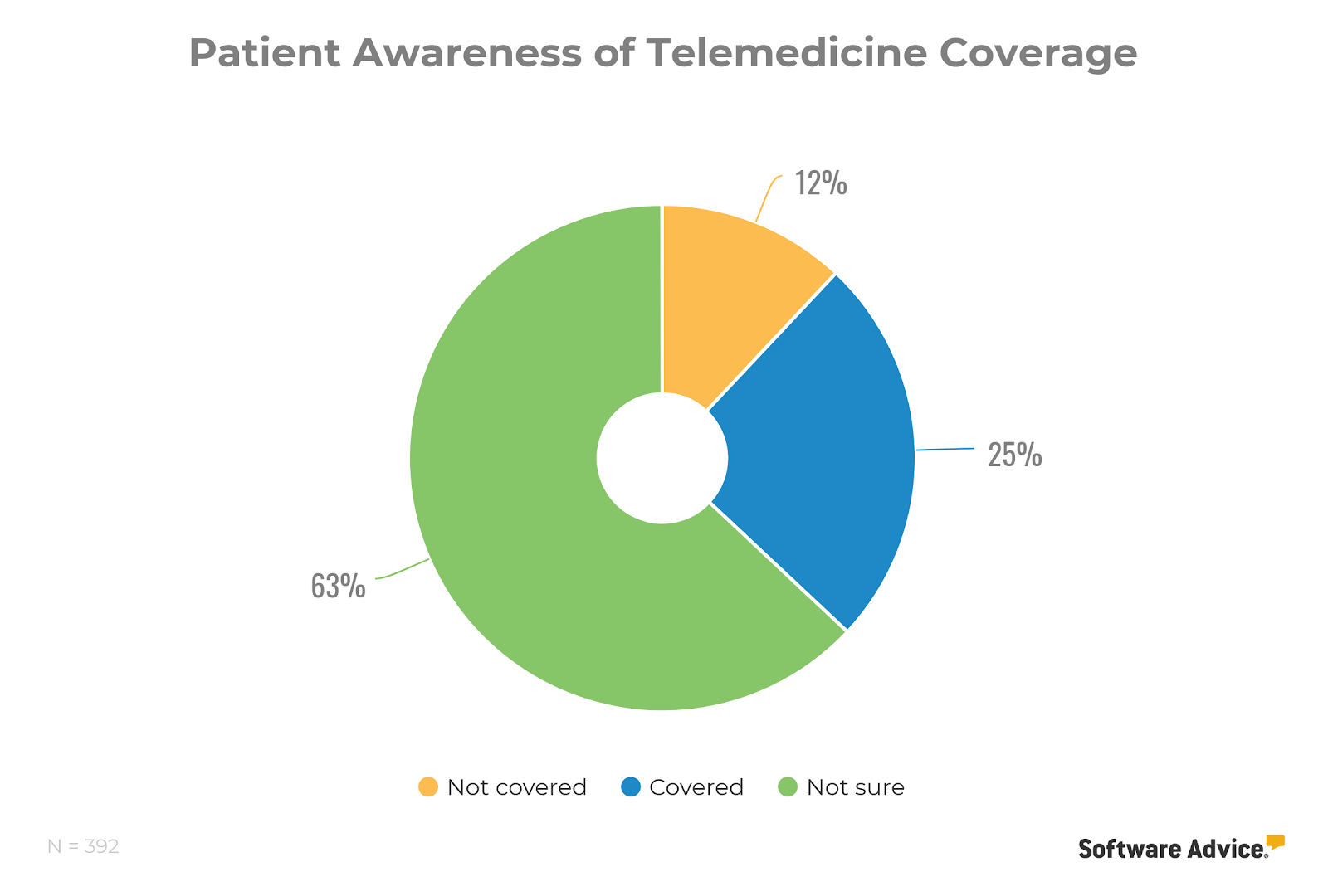
In 2017, 72% of respondents didn’t know whether their health insurance offered telemedicine. This year, a combined 37% of patients were well-versed enough in their health insurance coverage to say for certain whether or not telemedicine was covered.
This indicates a rise in patient interest and information being circulated by providers and employers regarding telemedicine options, which is great news—but there are countless patients to still reach.
More patients are using telemedicine
When we asked patients in 2017 if they had ever used telemedicine services, 83% said “never.”
This year, the number of patients who haven’t experienced telemedicine decreased significantly.
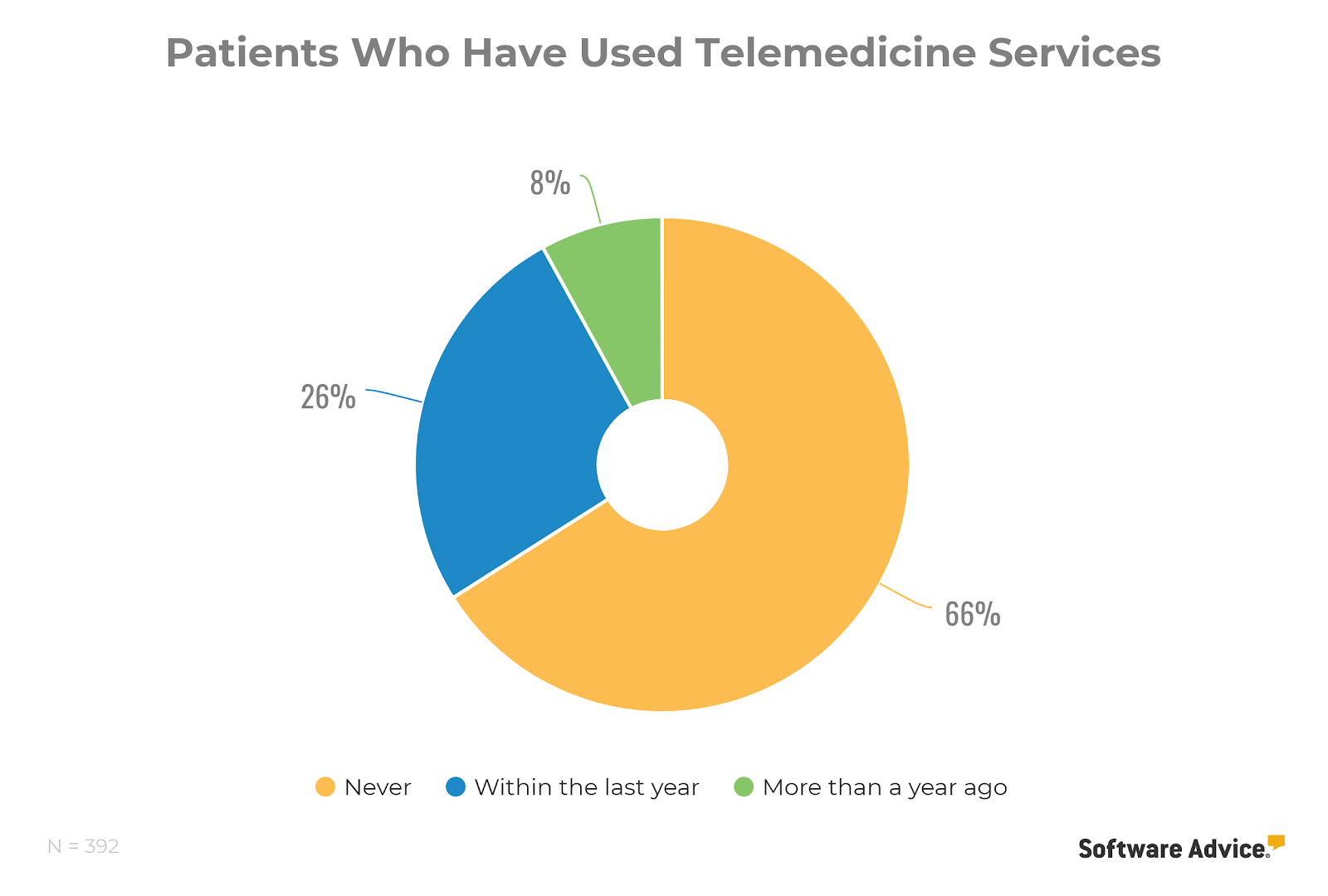
In the original survey report, we predicted that an increase in awareness would result in an increase in telemedicine use:
“Of the medical consumers surveyed by Software Advice, only 17 percent had experience using telemedicine services. This statistic could correlate with the number of patients who don’t know if telemedicine is available to them; indicating that an increase in awareness will result in an increase in use.”
Lisa Hedges, 2017
Based on the updated survey results, it seems this was an accurate assumption. Medical providers should expect patient interest in and use of telemedicine to continue to grow as technology becomes more secure, more reliable, and easier to access.
Patients want doctors to provide telemedicine
In fact, doctors who adopt telemedicine software gain a competitive advantage over those who hesitate.
We asked our survey respondents how likely they would be to select a medical provider that offers telemedicine versus one that does not, and the results were incredibly positive.
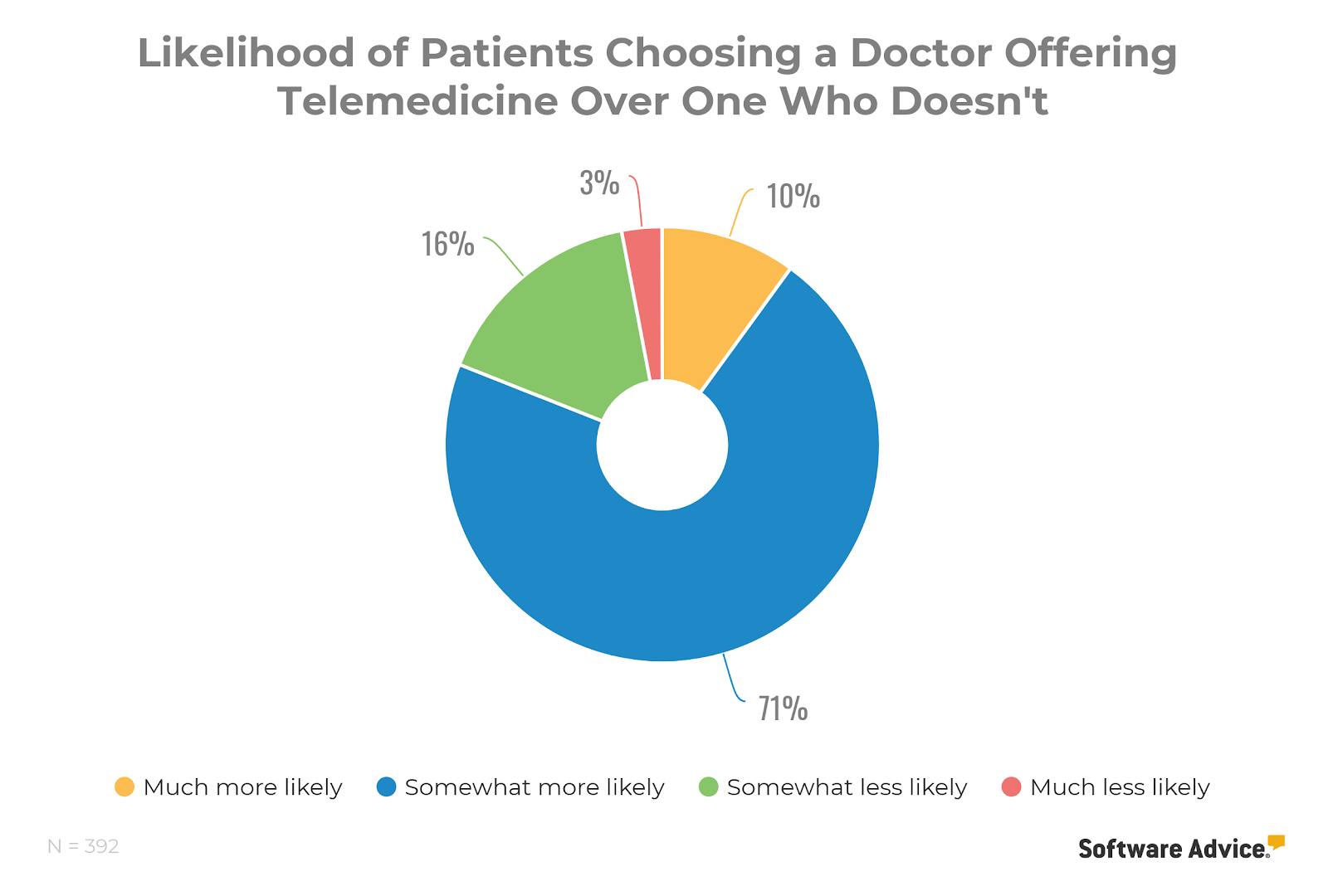
It’s easy to see the high percentage of patients who have still never used telemedicine or who don’t know if they have access to it and think that means patients don’t want it, but that’s absolutely not the case.
We also asked patients whether they would prefer an in-person appointment or a telemedicine appointment if they were experiencing headaches—most preferred a video consultation.
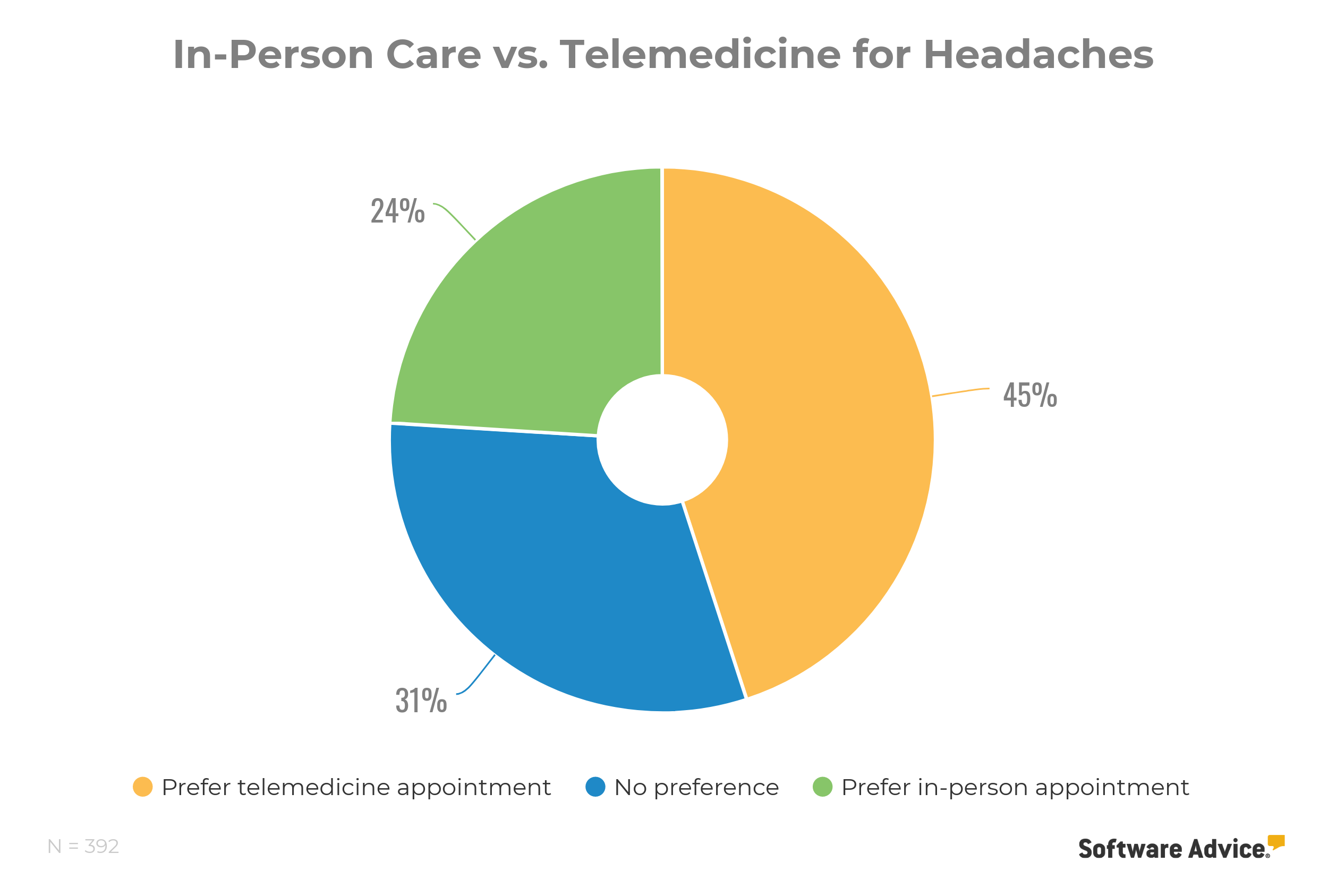
Overall, patients are more interested in seeking telemedicine services for minor symptoms like allergies, colds, or nausea, but still prefer in-person consultations for more serious issues like injuries.
For patients, telemedicine has pros and cons
The patients we polled who have used telemedicine conferencing had a lot to say about the advantages and disadvantages of remote medical care. When asked what benefits they enjoyed most, a combined 53% said that a major benefit is not having to leave their home.
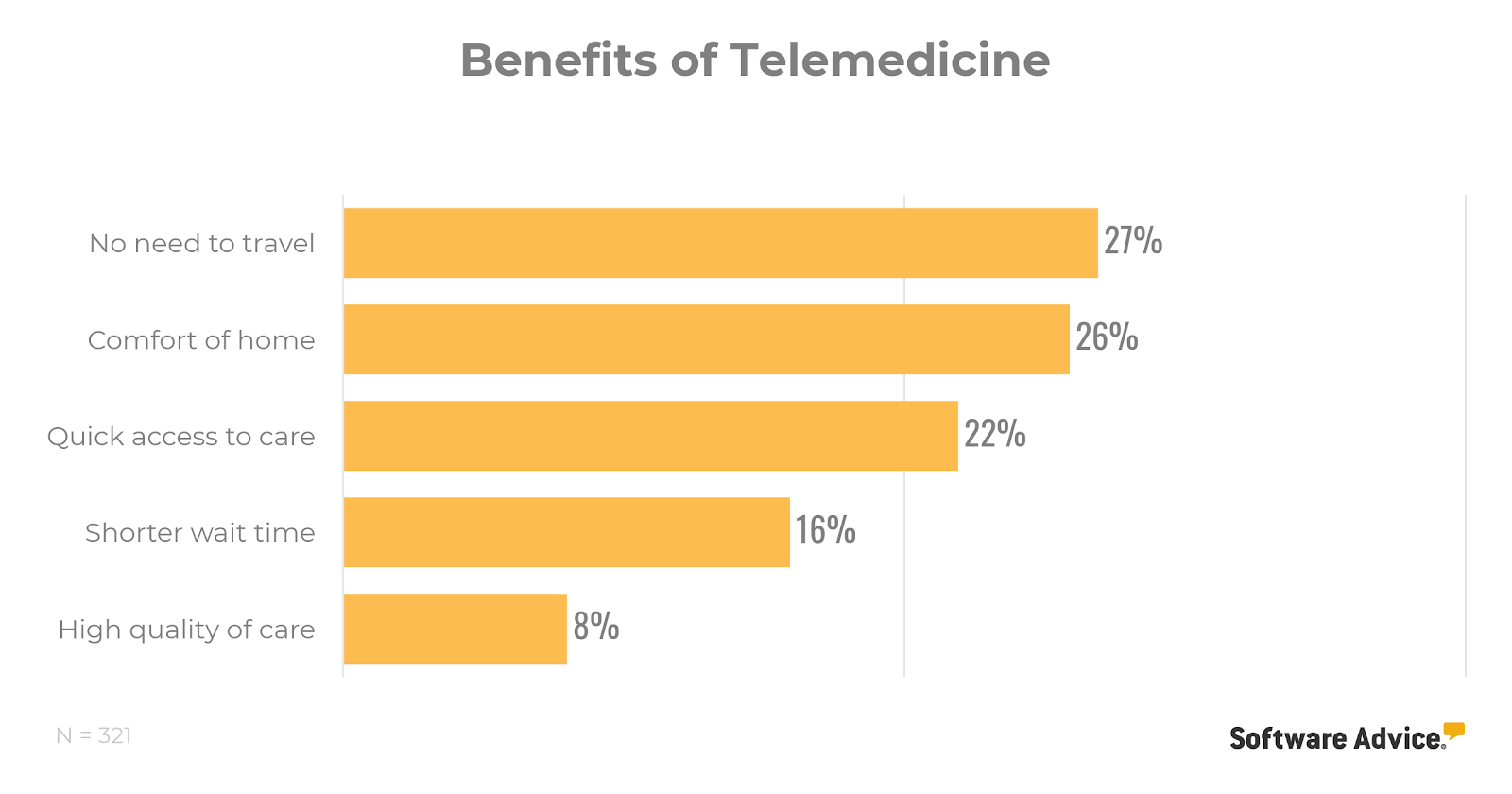
On the other end of the spectrum, patients saw the biggest challenge of telemedicine to be the lack of physical exams.
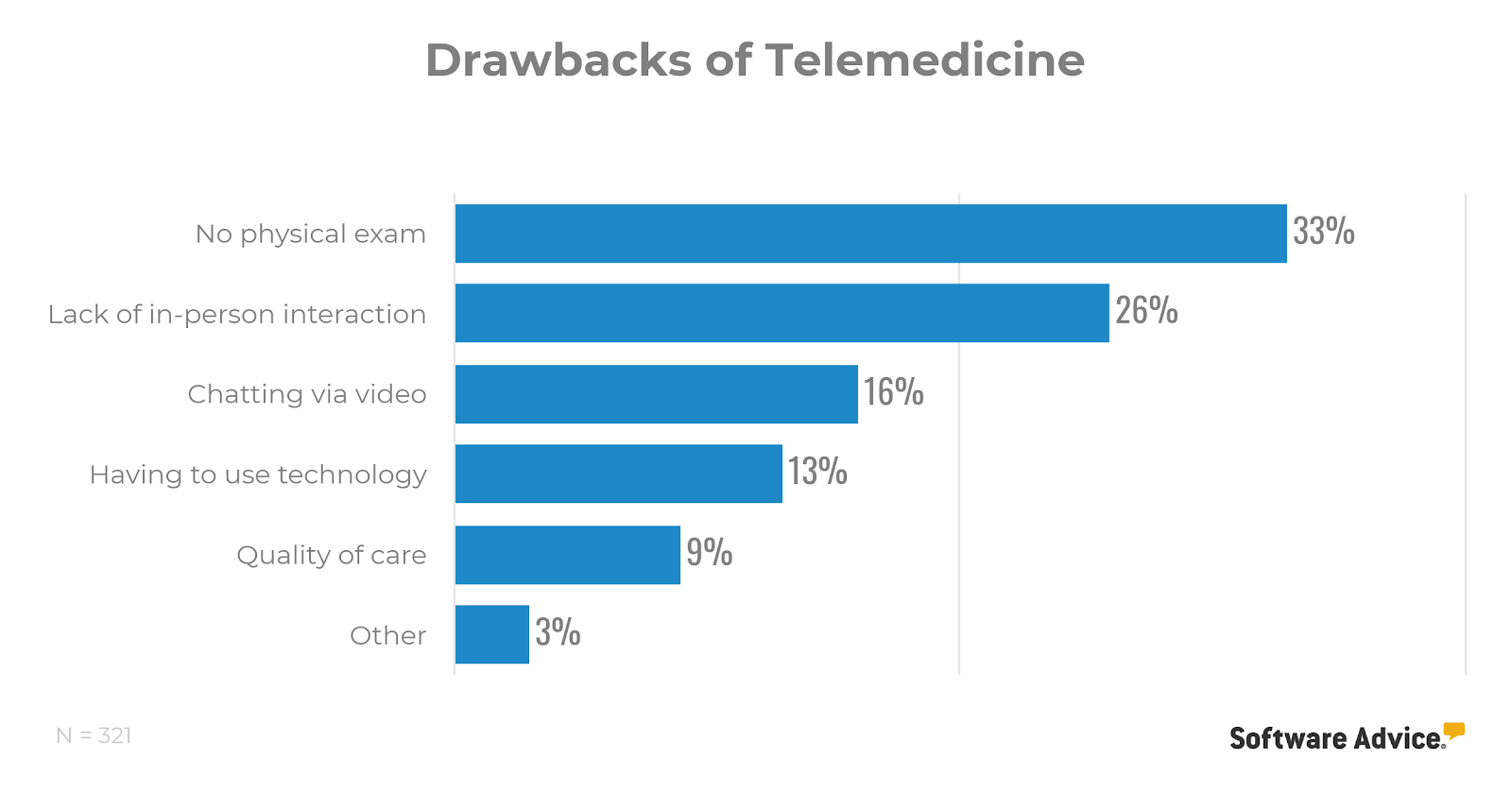
Despite these drawbacks, though, the number one reason patients in our survey said they still hadn’t tried telemedicine was because their providers don’t offer it.
If you’re one of those practices failing to offer these much-desired telemedicine services, you should strongly consider investing in this technology as soon as possible.
You have options when it comes to your telemedicine software—some systems come with specialty-specific features, such as progress notes for mental health or remote monitoring tools such as insulin pumps for diabetes specialists, and other systems are specialty-agnostic. The cost of these systems ranges, but basic platforms are available for any budget.
To learn more about what software options are available, reach out to Josh Muraki and his team of medical advisors to discuss your practice’s needs and find out which telemedicine systems meet them.
Telehealth survey demographics and methodology
For our survey, we polled 392 U.S. patients using screening questions to identify the best candidates
We conducted a survey in July 2019 to collect the data presented in this report. We used screening questions to narrow the number of respondents down to 392 with the relevant experience to answer our questions.
If you have comments or would like to obtain access to any of the charts above, please contact lisa.hedges@gartner.com. You can also find the author on Twitter @notadoctorLisa.
Note: The information contained in this article has been obtained from sources believed to be reliable